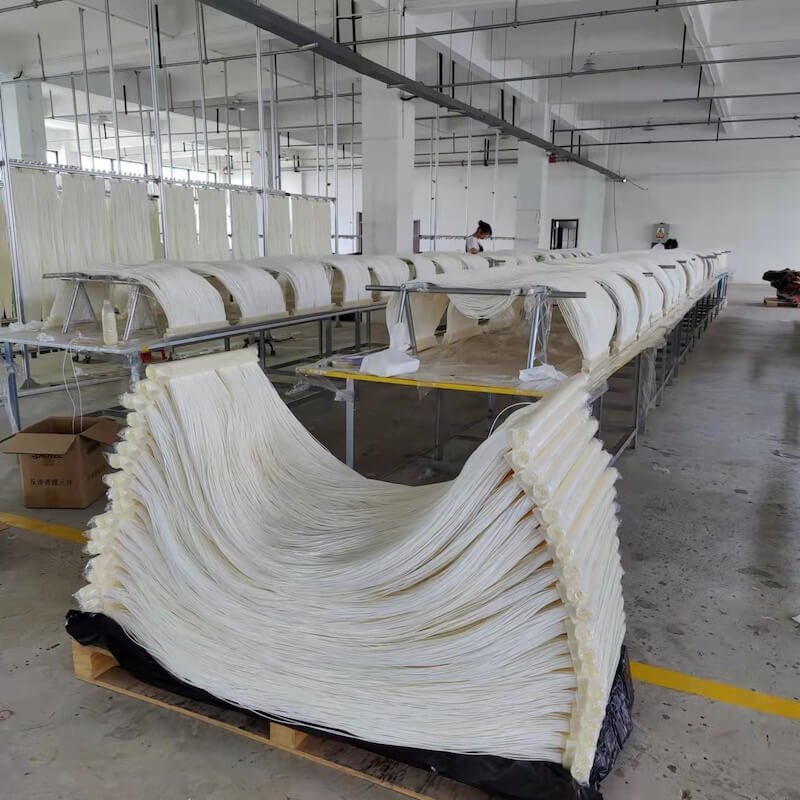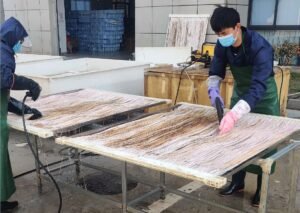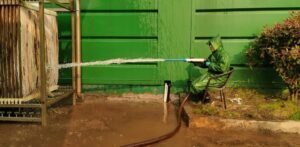Since its invention, hollow fiber MBR membranes have been widely used in various industrial filtration processes. Understanding its advantages and disadvantages can help us use them better.
The Advantages of MBR Membrane
- The hollow fiber MBR membrane is made of polyvinylidene fluoride, which is chemically stable and strongly resistant to cleaning chemicals. It can be used in various types of industrial sewage treatment and is suitable for treating complex and fluctuating high suspended solids sewage. It is an ideal choice for membrane bioreactors.
- The hollow fiber MBR membrane has a strong anti-pollution ability, easy cleaning, strong chemical corrosion resistance, and strong resistance to acids, alkalis, oxidants, and other chemicals. It is suitable for various chemical cleaning methods and can effectively prolong the service life of components.
- The fiber retention precision is high, the highest precision can reach 0.1um, and the hollow fiber MBR membrane can effectively prevent deeply embedded pollution.
- The hollow fiber MBR membrane has good flexibility and can use conventional aeration methods to slow down membrane fouling.
- MBR membrane is highly stable and tolerant to incoming water quality fluctuations.
- The hollow fiber MBR membrane has high porosity, strong water permeability, excellent structure, low filtration resistance, and low energy consumption.
- Produced in terms of Thermally Induced Phase Separation(TIPS), the hollow fiber MBR membrane is safer and more reliable.
- The hollow fiber MBR membrane has a large membrane area, a high packing density, a high water flux, and a low operating cost.
- The MBR tank can replace the traditional secondary sedimentation tank. The footprint is 3-5 times smaller than before, which has better adaptability to sludge bulking and higher filtration efficiency for MLSS in sludge.
- Highly adaptable, we can directly install the MBR membrane into the plant’s existing clarifiers, bioreactors, or other tanks, all of which can provide effective filtration treatment.
The Disadvantages of MBR Membrane
- The fibers may easily be deformed and ruptured when impacted or pulled by an external force.
- The hollow fiber MBR membrane has high requirements on the influent water quality. If there are many solid particles or hard substances in the influent, it may easily cause the hollow fiber to break.
- Due to its unique structure, the hollow fiber MBR membrane needs chemical cleaning to ensure flux stability. If the cleaning operation is improper or the cleaning agent is not appropriately cleaned, it will cause pollutant residues, affect water production, and reduce the quality of the effluent.
- The hollow fiber MBR membrane is not suitable for excessive aeration. Excessive aeration can easily lead to excessive oxygenation of activated sludge and reduce the filtration effect.
There are many brands of hollow fiber MBR membrane on the market. Their prices and performances may differ, but the basic design principles are the same. SPERTA recommends that when you choose hollow fiber MBR membranes, you should make judgments based on the quality of the influent water, combined with the parameters for comprehensive consideration.
Post Views: 496









